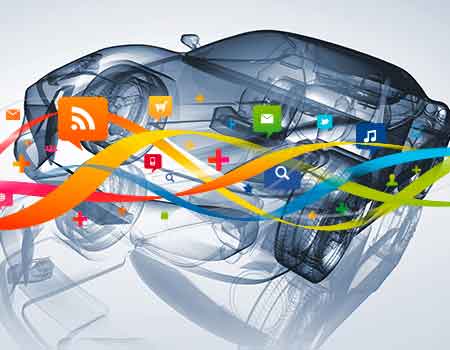Ernst & Young estimates that 104 million or so new cars are expected to have some form of connectivity by 2025. That’s good news for the large percentage (46%, according to Gartner) of today’s consumers who want their cars connected so they can safely access inside their car the applications they enjoy on their smartphone.
 That desire for smartphone-like connectivity in cars extends to automatic or on-demand updates of in-car apps as those updates become available. Receiving accurate and up-to-date information on the drivability of their car – maintenance scheduling, recalls, etc. – is an extra benefit that consumers will, chances are, learn to rely upon.
That desire for smartphone-like connectivity in cars extends to automatic or on-demand updates of in-car apps as those updates become available. Receiving accurate and up-to-date information on the drivability of their car – maintenance scheduling, recalls, etc. – is an extra benefit that consumers will, chances are, learn to rely upon.
That’s all easier said than done, considering the increasing software complexity and millions of lines of code in cars today. Configuring and managing all that is one of the top challenges in the automotive industry today and, because upgrades that require a trip to the dealer are a last resort, automakers are increasingly looking for integrated, cloud-based, sustainable and scalable solutions for software configuration management.
“Since the cost of updating software at a dealer is hundreds of dollars per car, software updates are becoming a significant expense for every auto OEM,” says Egil Juliussen, Director & Principal Analyst, Automotive, at IHS. “The result is that all OEMs are interested in doing software updates remotely via communication links to the car.”
Juliussen notes that remote software updates, or Firmware/Software Over The Air (FOTA/SOTA), are common in the PC, smartphone and tablet industries. Experience and knowledge gained in those industries can be used in the auto industry.
“Remote software upgrades are simple in principle, but completing the update reliably, securely and without errors, no matter what happens with the communication link during the update, is not so easy,” he says. The value of FOTA/SOTA experience gives an edge to firms with such experience, including Symphony Teleca.
“FOTA/SOTA technology benefits consumers, dealers and automakers,” says Vildan Hasanbegovic, Director of Marketing at Symphony Teleca. “For consumers, their car is an extension of their mobile device, and they expect the same convenience, availability and performance in both. For dealers and for automakers, FOTA/SOTA presents cost saving potential as well as a way of keeping in closer contact with customers. More importantly, automakers are now able to use the valuable vehicle diagnostics to help them improve reliability and safety in cars.”
Automakers and suppliers will have to modify and update their ECUs (electronic control units) and will also have to invest in IT (information technology) infrastructure to manage remote software servers and databases. Juliussen says investments in secure transmission and cyber-security at the ECU gateway and at individual ECUs will also be needed.
Despite all that, remote software updates have significant economic advantages due to large cost savings compared with manual approaches. Juliussen estimates the savings at $200 to $300 per car with potential to increase over time. “With millions of cars being recalled every year and software being a leading cause, the cost savings in the US alone will be counted in billions of dollars per year.”






